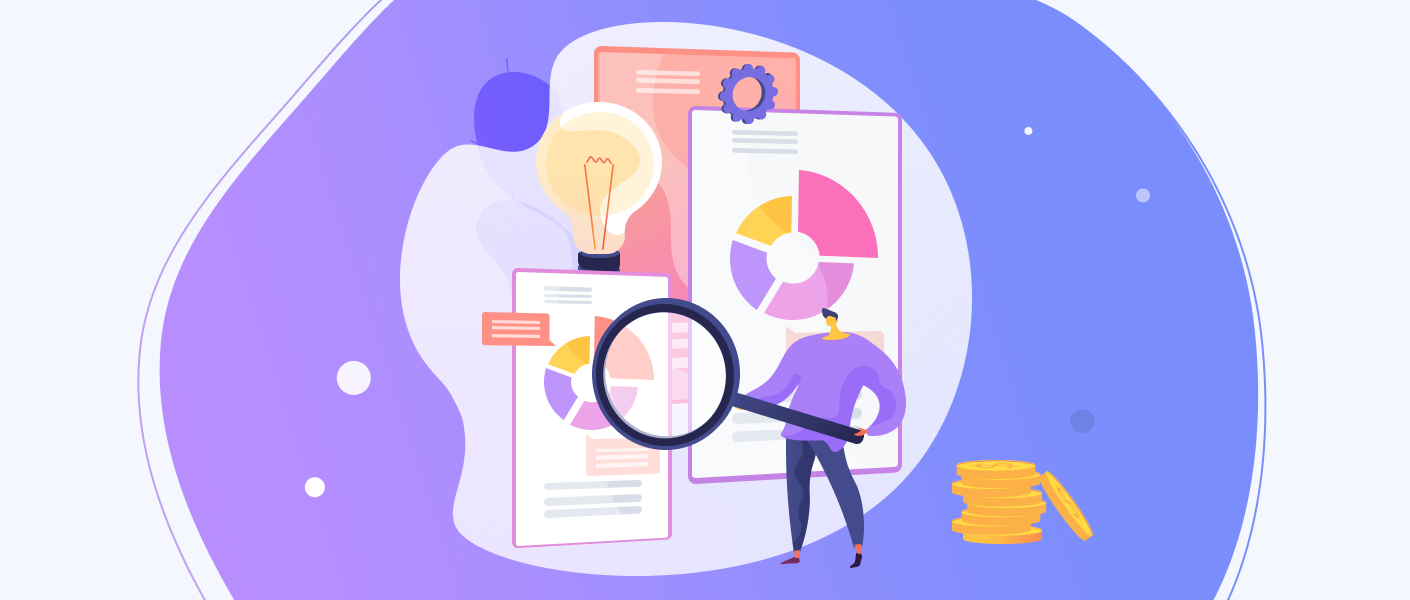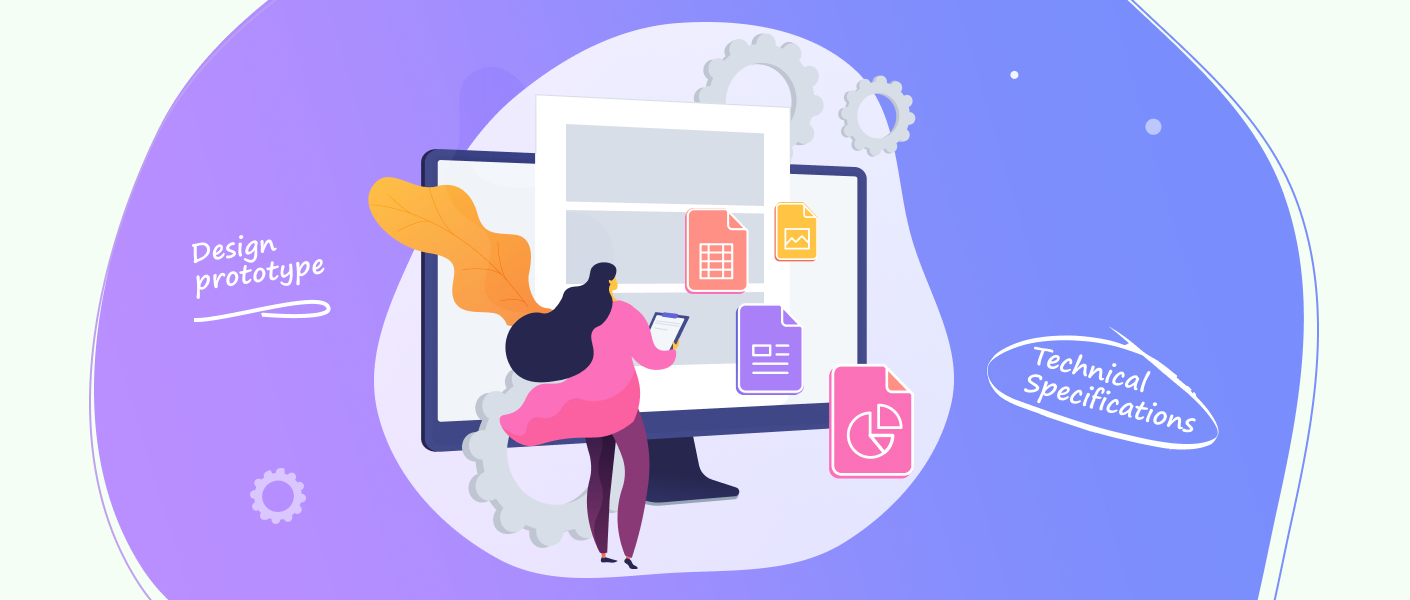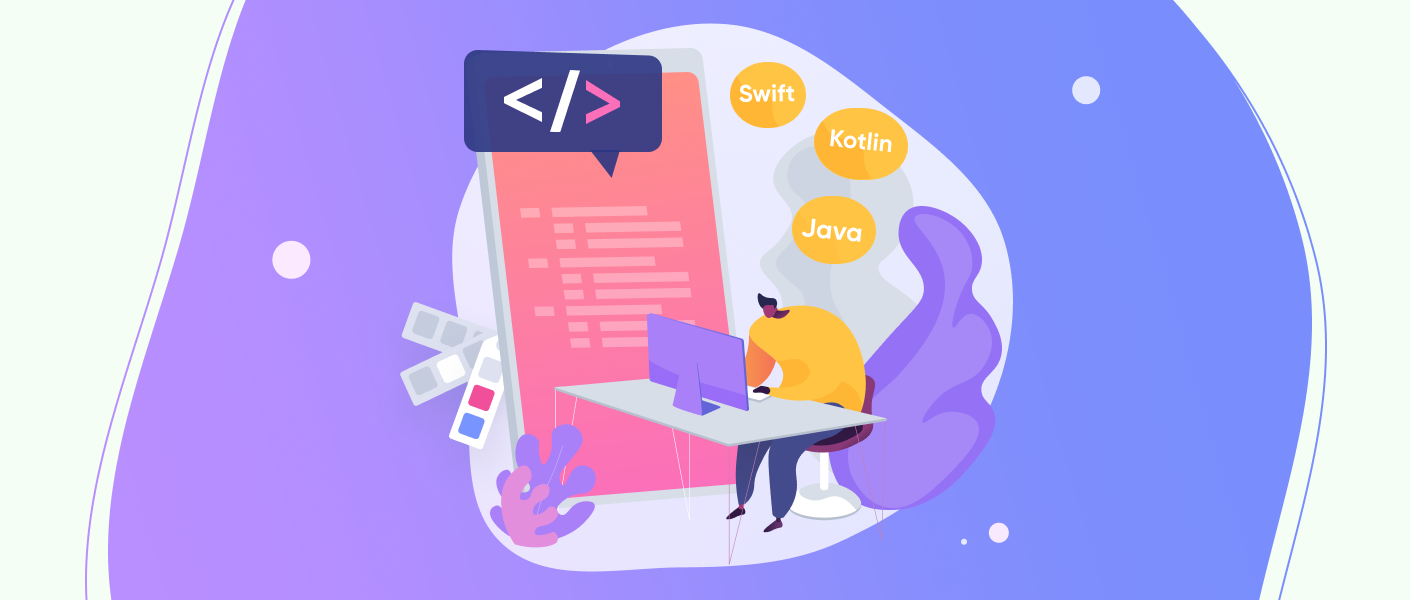The app development process from scratch to release takes about 8 main stages. Some of them are done in days, and some may still be in the process even after 3 months. Some steps can be performed in parallel, and some only finishing the previous step.
According to the 2021 report, as of January 2021, there are about 7.83 billion people live on Earth and there are 8.02 billion smartphones in use. That is, right now there are more smartphones in the world than there are people themselves, and this is easy to explain because many people use two or even three smartphones at the same time. But that's not all, another important fact is that currently, 60% of the world's population has access to the Internet.
All this information indicates that the mobile market is constantly growing and evolving, and this digital expansion will continue for many years until smartphones become commonplace even for the inhabitants of the poorest countries.
The stages of application development depend on the size of the project and the existing information. But in any case, this is a full-fledged development of a separate IT solution.
Find all app development process steps and its description below.
Analyzing the Market and the Target Audience

First of all, you, as a customer, need to set the final goal and describe the audience thoroughly for which we create the application. The following list of questions will help to correctly and accurately formulate the technical specification for the mobile app development process:
- What goals are you planning to achieve with the mobile app?
- Are there any plans to sell goods or services within the application?
- Who is the target audience and what are ways to expand it?
- Who are your main competitors in the niche?
- Does your target audience intersect with the target audience of your nearest competitors?
- Why the user should pick your application?
- What is the budget for development and promotion?
If you have a ready-made technical specification, we can roughly indicate how much it costs to create an app and how long it will take. For this, the scope of work is estimated and a detailed plan is drawn up that describes the main stages of app development.
After studying the technical documentation, the developers make clarifications to find out specific details that you may not even know about. We set the deadline based on all the data, the amount of required time to develop and test the app.
Developing and Approving the Technical Specifications

If you haven’t prepared requirements, you’ll get a brief to fill out. After that, an extended estimate is drawn up indicating the cost of applications of different functionality (it is necessary to clarify what details set the price). Then the specialists start developing the technical specification as a mobile app development process step.
The technical task describes the project’s characteristics, methods and technologies, timing, etc. When setting the technical task, our specialists pay attention to technical components, trend design options, and optimal marketing tools for the implementation of a new mobile application.
After creating the technical task we start working on the design prototype, which makes it possible to assess the prospects and potential of the product.
We determine the following points as a result of this stage:
- Functional and non-functional requirements specification
- The general plan for graphic interface
- The detailed plan for the project implementation
- Budget amount
Design prototypes are divided into static and interactive depending on the selected tools and the goal. They always take into account the technical and software base needed to develop a particular application.
When we have basic information for a future application, we move on to working out the details. First, we create a flowchart, then we describe the basic modules and detail them until we have a clear picture. We need to understand how users interact with the future app and what they get as a result. You may want to add new or remove unnecessary functions in the apps development process and this is the perfect time to think about it.
Your wishes determine how detailed this part can be. In one case, it is enough to discuss the functionality and input data, while in another case we’ll need to agree on every detail, down to the smallest element on the application screen. We create an app development process flowchart to make sure we covered every little detail for further development.
When the concept of the application is clear, we work on functional requirements, the budget, and other details. After that, we prepare the technical documentation.
Designing
The stage of formation of the visual component begins after receiving from the analyst the basis of the graphical interface and wireframes. The detailed design process includes:
- drawing a map of screens and graphic elements
- creation of a static or interactive prototype that takes into account different scenarios of use
- visualization of the appearance of the application and demonstration of its behavior following the planned features
UI/UX designer selects design tools depending on the specific tasks and wishes. During the rendering process, you can see and evaluate the appearance of the program. It is very important to get feedback at this application development step so that the design solutions fully meet the specified requirements, as well as the recommendations of business analysts.
Coding

After the preparation and designing stages, we move to the coding. Specialists use various technologies and tools that we pick following your specifications, brief, and agreed design.
While creating a mobile application, we use Java and Kotlin for the Android app development process, as well as Swift for iOS app development. We also use top libraries and frameworks. For further development, we code with the help of Python, ReactJS, Kubernetes, Django, NestJs, PostgreSQL, WebSockets, etc.
It is important to check in with the designer after completing the layout. The designer checks the app’s screens so everything works following the developed design. This is one of the crucial application development stages to make sure everything goes fine.
Final debugging is performed on simulators and real devices.
Testing
An integral part of the application lifecycle is running tests. After writing the software components, we begin the internal testing on real devices from Android and Apple. At this mobile app development stage, the developer can ensure that the mobile product interacts correctly with the hardware and software of smartphones/tablets, as expected during the prototyping stage.
Scope of work:
- Testing technical task
- Writing test documentation
- Starting to test the finished part of the app
- Reporting bugs
- Fixing bugs
- Retesting the app
- Checking the behavior of the product following the prepared test documentation and your technical specification
Releasing the Pre-release

A key stage in the mobile app development process steps is releasing a working version after running a series of tests and completing improvements. It is in this form that the program is added to Google Play, Apple App Store, or another similar service where applications are distributed.
Cross-platform solutions are placed on several test sites from Google and Apple at once so that the customer can install the application on his device and test live how it works.
Releasing the App
The development team, including the designer, analyst, QA engineer, developer, should approve the result before the release.
Users should go through the verification process to access the download. Some customers prepare and publish the product in the Apple App Store, Google Play on their own, but most prefer to use the developers' help so that the release goes without surprises.
Handling the App After Its Release
Once published, the app's life cycle is just beginning. If bugs are found after the presentation, the specialists promptly correct all the shortcomings.
As a rule, within the first 2-3 months it becomes clear which aspects of the program require revision or alteration based on user feedback. Then the customer can initiate the launch of a repeated development phase with a new data model or sign a maintenance contract. For our part, Owlab is ready to suggest which option would be more reasonable during the mobile application development process.
Final Thoughts
People all around the world constantly download mobile apps for each business. It is not enough for a business to have a website now. You need to have your own app to follow your customer, to get necessary data, and provide him or her with relevant discounts and get more engagement. This is how apps bring immediate profit to your business. It can be either product- or service-based business with its own app for the users’ convenience. We create original and effective mobile applications in a short time.
This is where you need a team that knows everything about apps and app development steps.
Check our Mobile Development Portfolio to see our work and follow the mentioned phases of app development with the working projects.
FAQ
What Is the App Development Process?
The mobile applications development process is the process where you and the development team create an app. Usually, this starts with your business idea and marketing analysis that helps to set an aim for the app. It either provides information to the user, sells goods, services, be a social platform, or all of the above.
After setting with the idea, you and the team go through the whole development process starting with setting the technical task and finishing with the post-release support.
What are the stages of mobile app development?
The development stages are everything that happens between setting the purpose of the app and to the post-release support. The main stages are described in the article, but there can be additional ones, like picking the best communication platform for you. It helps to communicate faster and ask the questions that a development team might have. Also, there can be smaller management stages to check in with you.
Based on the core stages we can add additional ones if you need them.